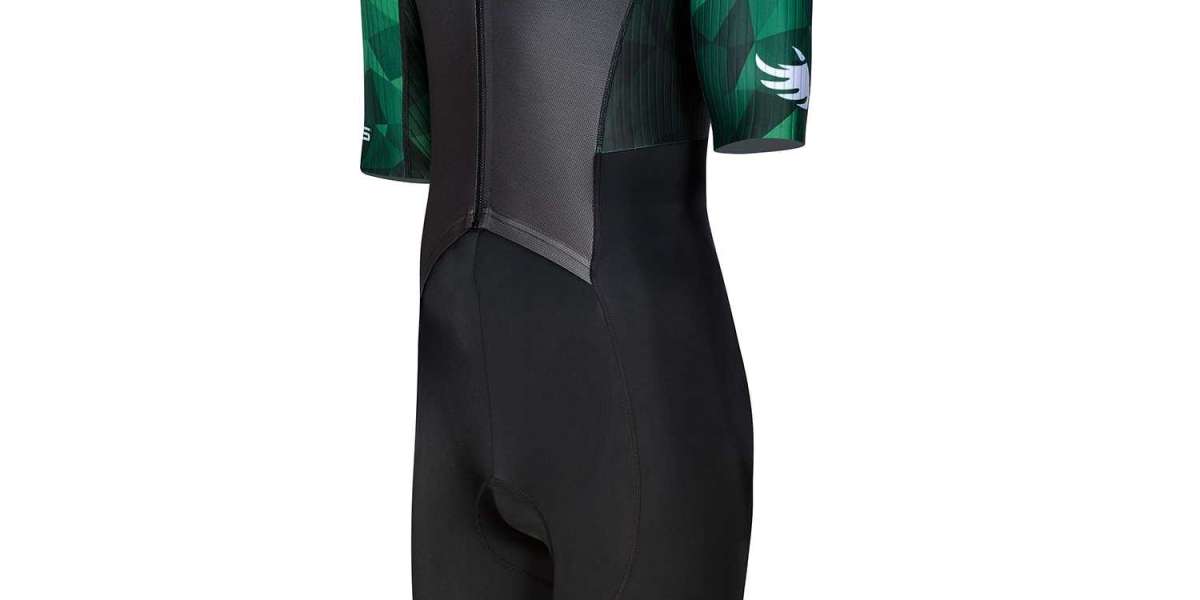Trisuits are the unsung heroes of triathlons, blending functionality and comfort to support athletes through swimming, cycling, and running. Over the years, these multisport garments have evolved significantly, catering not only to athletes' needs but also pushing the boundaries of performance. Let's delve into the journey of tri suit, exploring their evolution and the features that make them indispensable for triathletes today.
Early Days: Function Over Form
In the early days of triathlons, athletes often resorted to wearing separate garments for each segment of the race. This approach, however, proved cumbersome and time-consuming during transitions. As the sport gained popularity in the 1980s, the need for a specialized garment became evident.
Enter the trisuit – a one-piece garment designed to streamline transitions and provide comfort across swimming, cycling, and running. Early trisuits focused primarily on functionality, featuring quick-drying materials for the swim, padding for the bike leg, and moisture-wicking properties for the run.
Advancements in Fabric Technology
The late 1990s and early 2000s marked a significant shift in trisuit design, driven by advancements in fabric technology. Manufacturers began incorporating materials like Lycra and spandex blends, offering superior stretch, breathability, and moisture management.
These fabric innovations not only enhanced comfort but also contributed to improved aerodynamics, crucial for reducing drag and enhancing performance, especially in the cycling segment. Trisuits became sleeker, more form-fitting, and tailored to the specific demands of each triathlon discipline.
Integration of Performance Features
As triathletes aimed for faster times and better results, trisuit design evolved to integrate performance-enhancing features. This included strategic paneling and compression zones to support muscle groups, reduce fatigue, and improve recovery during and after the race.
Manufacturers also began incorporating features like hydrophobic coatings for faster swim times, aerodynamic textures to minimize air resistance, and UV protection for outdoor races. Every element was fine-tuned to offer not just comfort but a competitive edge to athletes.
Customization and Personalization
In recent years, the trend of customization and personalization has taken center stage in trisuit design. Athletes can now customize their trisuits with team logos, sponsors' branding, and personalized color schemes, reflecting their identity and affiliations.
Furthermore, advancements in 3D scanning and printing technologies have enabled the creation of bespoke trisuits tailored to individual body shapes and preferences. This level of customization not only enhances performance but also boosts confidence and a sense of belonging among athletes.
The Future of Trisuits: Innovation Continues
Looking ahead, the evolution of trisuits shows no signs of slowing down. Future advancements may include smart fabrics with integrated sensors for biometric monitoring, adjustable ventilation systems for varying race conditions, and sustainable materials to reduce environmental impact.
Additionally, trisuit designers are likely to continue exploring new frontiers in aerodynamics, comfort, and versatility, ensuring that triathletes have the best gear to achieve their goals. Whether it's shaving seconds off transition times or maximizing performance across disciplines, trisuits will remain essential companions in the world of triathlon racing.
In conclusion, trisuits have come a long way from basic functionality to cutting-edge performance gear. Their evolution mirrors the relentless pursuit of excellence in triathlon racing, where every innovation aims to empower athletes and elevate their performance on race day.



